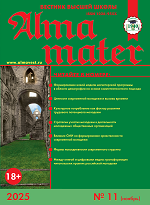UDC 378-042.4:004
https://doi.org/10.20339/AM.10-22.060
Andrej B. Evseev, Cand. Sc. (Pedagogy), Associate Professor at Vladimir State University named after A.G. and N.G. Stoletovs, e-mail: andrej.yevsejev@rambler.ru
A new approach to the use of CLIL-method in teaching major subjects to BA students is presented. The author of the article proves the necessity of cooperation of the case method and CLIL to achieve more successful results in studies. A special emphasis is put on the positive experience in application of state-of-the-art “edge-to-edge” technologies, platforms and tools (Mentimeter (WordItOut), Trello, Яндекс.Телемост, Edpuzzle) in a higher educational establishment. Considered are the possible ways of scaffolding for students on the course.
Key words: CLIL-method, case method, “edge-to-edge” technologies, scaffolding, higher educational establishment.
References
1. Marsh, D. (2002). Content and Language Integrated Learning: The European Dimension — Actions, Trends and Foresight Potential. Oxford: Oxford Uni. Press, 204 p.
2. Coyle, D., Hood, P., Marsh, D. (2010). CLIL: Content and language integrated learning. Cambridge: Cambridge University Press, 173 p.
3. Coyle, D. (2007). Content and Language Integrated Learning: Towards a Connected Research Agenda for CLIL Pedagogies. International Journal of Bilingual Education and Bilingualism. Vol. 10. No. 5. P. 543–562. URL: https://doi.org/10.2167/beb459.0
4. Khalyapina, L.P. (2017). Interdisciplinary coordination in the system of professionally-oriented teaching of foreign languages in higher education institution. Bulletin of Perm National Research Polytechnic University. Problems of linguistics and pedagogy. No. 2. P. 149–157. URL: https://doi.org/10.15593/2224-9389/2017.2.15
5. Wright, W.E., Baker, C. (2017). Key Concepts in Bilingual Education. In: Garcia, O., Lin, A., May, S. (eds). Bilingual and Multilingual Education. Encyclopedia of Language and Education. Springer, Cham. URL: https://doi.org/10.1007/978-3-319-02258-1_2
6. Fajardo Dack, T., Argudo, J. & Abad, M. (2020). Language and Teaching Methodology Features of CLIL in University Classrooms: A Research Synthesis. Colomb. Appl. Linguistic. J. 22 (1). P. 40–54.
7. Gulaya, T.M., Romanova, S.A. Subject-language integrated learning using information and communication technologies in a non-language university. Philological Sciences. Voprosy teorii i praktiki. 2016. No. 2 (56): in 2 parts. Part 2. P. 181–184.
8. Le, N.P. and Nguyen, P. (2022) Content and Language Integrated Learning (CLIL) Method and How It Is Changing the Foreign Language Learning Landscape. Open Access Library Journal, 9, 1–5. URL: https://doi.org/10.4236/oalib.1108381











.png)






